June 5, 2025 | 06:59 GMT +7
June 5, 2025 | 06:59 GMT +7
Hotline: 0913.378.918
June 5, 2025 | 06:59 GMT +7
Hotline: 0913.378.918
The Vietnam Sustainable Agricultural Transformation (VnSAT) project has had a great impact on rice farmers since it was implemented in Tien Giang province more than five years ago. The farmers in the project areas have changed their rice farming practices from traditional methods into advanced farming techniques including “3 reductions 2 increases” and “1 must 5 reductions”. By applying these techniques, production costs for rice cultivation decreased significantly, thereby increasing the profits for farmers in the project area with an average growth rate of 36.4%.
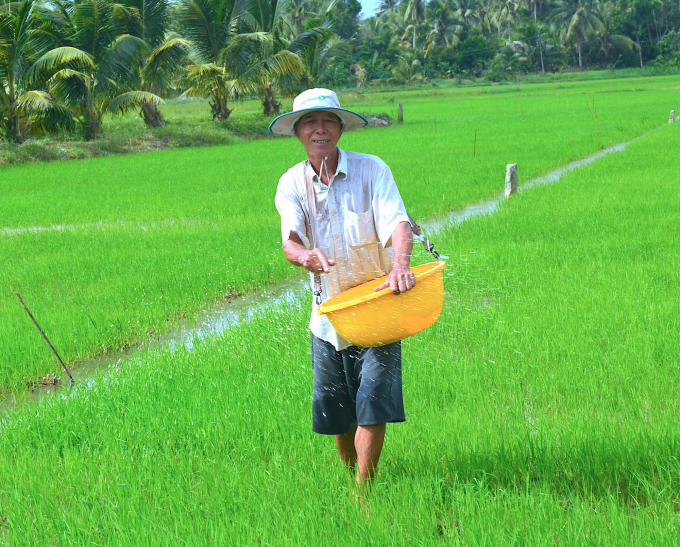
Rice farmers under the VnSAT project reduce fertilizer use to increase production efficiency. Photo: Minh Dam.
Vo Van Men, Director of the Tien Giang Sub-Department of Crop Production and Protection said despite surging fertilizer prices in the 2021-2022 winter-spring crop, thanks to reducing the use of seed and non-organic fertilizers, the local farmers still earned profits although the profits weren’t so high as before.
According to Cao Van Hoa, Deputy Director of the Tien Giang VnSAT’s Board of Management, to achieve the high result, training was focused from the beginning of the project. So far, hundreds of training classes on advanced rice farming techniques, cooperative management and development as well as rice production according to VietGAP standards and utilizing rice by-products have and been organized.
After training courses, 92.7% of households and 93.3% of rice cultivation area applied “3 reductions, 3 increases” technique while the percentage of rice cultivation using “1 must, 5 reductions” technique was 97.5% and 98.8% respectively.
Bui Van Phuc, Chairman of the People’s Committee of My Thanh Bac commune, Cai Lay district ( Tien Giang Province) said My Thanh Bac had over more than 900 hectares under rice cultivation. The VnSAT project has made a great change in the awareness of the locals, motivating them toward sustainable rice production. Previously, the local farmers used more than 20 kilograms of seed for direct sowing on 1,000 square meters. Currently, they boldly reduced to 10kg per 1,000 square meters. Thanks to cutting down seeds for direct sowing, the farmers increased yield and profit in rice crops. In the recent winter-spring crop, the yield averaged 8 tons per hectares, up 0.5% from the overall average.
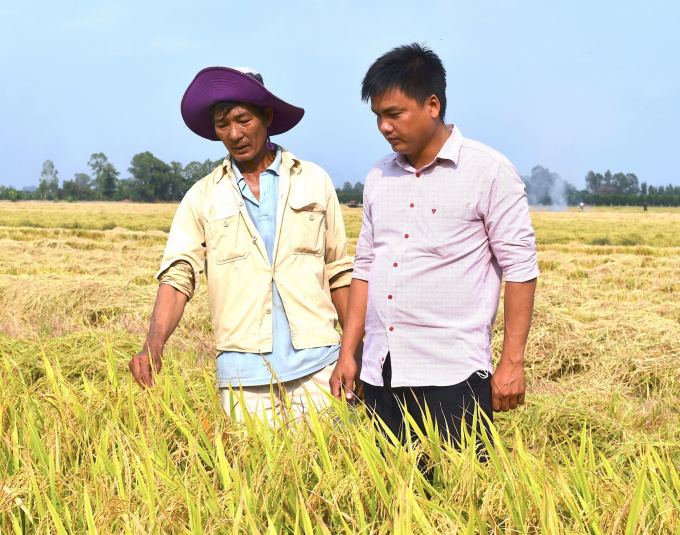
An agricultural officer of My Thanh Bac commune is talking with a farmer about rice production in the 2022 summer-autumn crop. Photo: Huu Duc.
Nguyen Van Viet, Director of My Thanh Bac Agricultural Service Cooperative said: “In the past, farmers were not trained on new farming techniques, they often sowed seeds at high density. At first when the VnSAT project was implemented the locals did not believe in it. Following nearly 1 year of carrying a pilot model they gradually followed it.”
According to Viet it was important to change the perception of each family. The local farmers are now used to new farming techniques, they won’t return to the old way of farming.
Apart from organizing training courses, the VnSAT project supported rice production in connection with enterprises as the basis for sustainable rice production. Accordingly, 16 cooperatives in Tien Giang have linked up with enterprises for rice consumption.
“The achieved results have played an important role in rice production adapting to climate change and smart rice farming as well as the formation of sustainable value chain in rice production,” said Cao Van Hoa, Deputy Director of the Tien Giang VnSAT’s Board of Management.
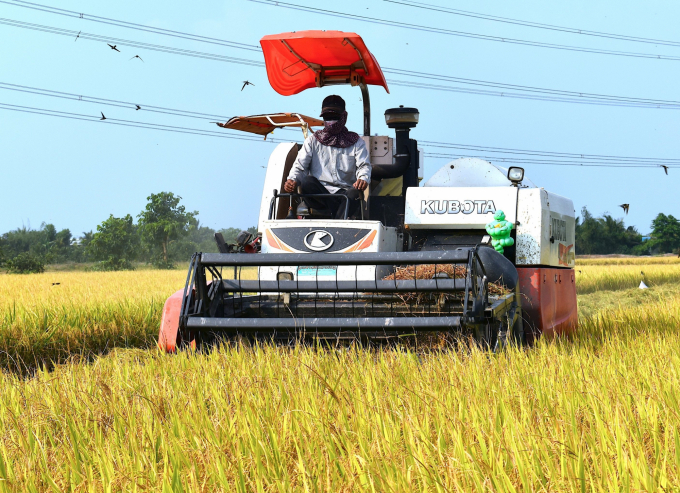
The achieved results have played an important role in rice production adapting to climate change and smart rice farming in Tien Giang: Photo: Minh Dam.
According to the survey conducted by the Tien Giang VnSAT’s Board of Management, by the end of 2021, almost 109,000 people benefited from the project, reaching 153% of the plan and nearly 17,900 hectares rice were cultivated with the use of sustainable farming methods, reaching 112% of the target. Besides, the profit of rice farming per hectare was increased by 36.4%, reaching 112% of the plan. Along with that, greenhouse gas emissions in rice production were cut down by 121,255 tons, reaching 114% of the target.
In Long An province, the VnSAT project has been implemented in 23 communes of five districts including Tan Hung, Vinh Hung, Kien Tuong, Moc Hoa and Tan Thanh which are under the area planned for growing high-quality and high-technology rice. The project attracted the participation of 25,140 households cultivating rice on a total area of 49,593 hectares.
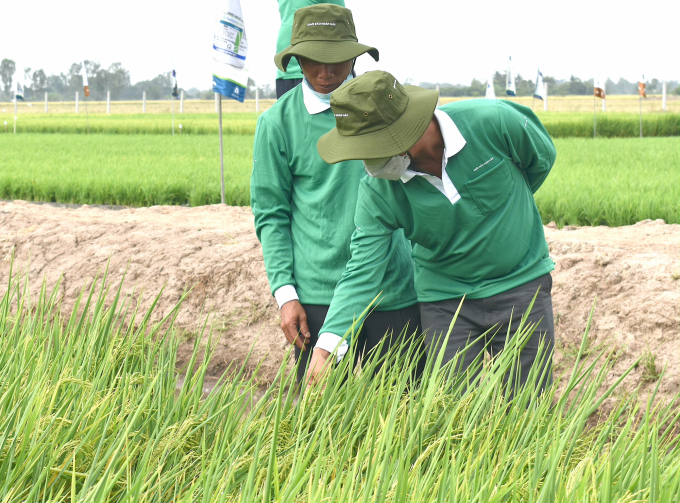
Farmers are visiting and learning from advanced rice farming models under the VnSAT project. Photo: Huu Duc.
Director of the Long An VnSAT’s Board of Management Nguyen Chi Thien said the results achieved were more than expected. Specifically, 90,804 people benefited from the project, reaching 138% of the target (66,000 people); 22,220 hectares of rice were cultivated with the use of “3 reductions, 3 increase” farming technique, reaching 111% of the target. The area of rice applying “1 must, five reductions” technique was 21,578 hectares, reaching 240% of the plan. In the 2021 summer-autumn crop, 6,892 hectares of rice were signed consumption contracts compared with the target of 6,000 hectares.
In comparison with control rice farming area, the profit of rice farming per hectare in the project area was increased by VND3-4 million. Carbon emissions from rice production were reduced by 188,171 tons, reaching 141% of the plan.
After five years of implementation, the Long An VnSAT project has achieved outstanding results including increasing rice farmers’ income, reducing negative impacts on environment, at the same time improving the competiveness of the province’s rice industry.
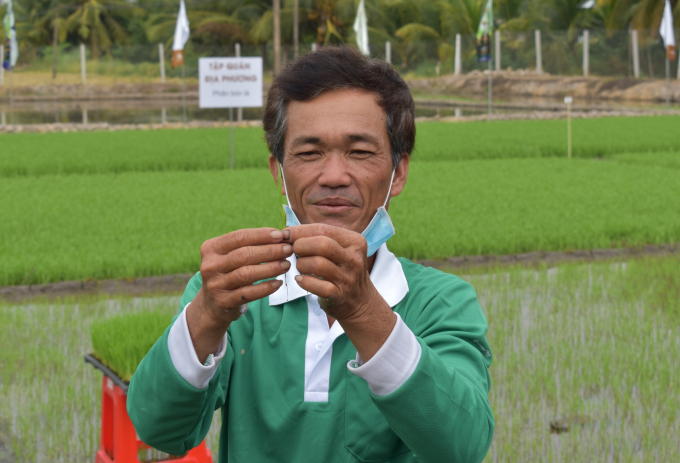
The success of the VnSAT project has created positive spill-over effects upon community. Photo: Minh Dam.
The success of the VnSAT project has created positive spill-over effects upon community, accelerating the process of agricultural restructuring; creating motivation and condition for the application of advanced techniques; promoting the development of large-scale rice fields, cooperation and mechanization in rice production; opening the way for sustainable rice production and adaptation to climate change.
Translated by Mai Tham
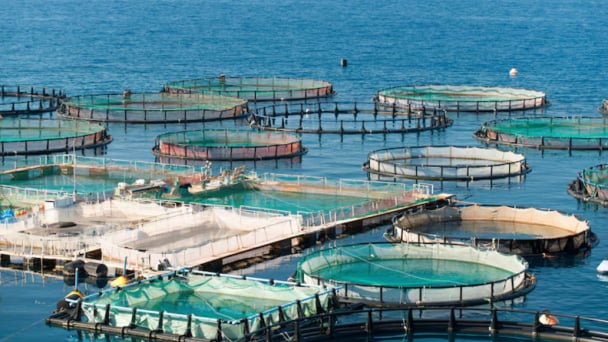
(VAN) Technology is redrawing the map of Vietnamese aquaculture: more modern, greener, and more sustainable.
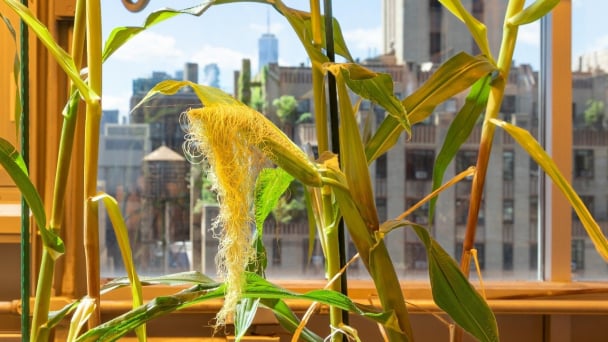
(VAN) Novel process harnesses machine learning to reveal groups of genes that determine how efficiently plants use nitrogen.

(VAN) Several scientists and farmers are experimenting with soil treatment in some key durian-growing regions such as Cai Lay (Tien Giang), Dak Song, Gia Nghia, and Dak R’lap (Dak Nong).
/2025/05/25/4127-3-073637_820.jpg)
(VAN) Thanks to the promotion from an FAO-implemented project, vegetable production in greenhouses in Moc Chau has seen strong development, from 1.5 hectares in 2021 to nearly 50 hectares in 2024.

(VAN) FAO has recently supported USD 140,000 to implement the project 'Risk mitigation human-animal interface risks through disease control initiatives in pig farming.'

(VAN) The People's Committee of Tra Vinh province has approved an adjustment to the investment policy for the Green Hydrogen Plant project, increasing its area to approximately 52.76 hectares.
![Reducing emissions from rice fields: [2] Farmers’ commitment to the soil](https://t.ex-cdn.com/nongnghiepmoitruong.vn/608w/files/news/2025/05/05/dsc08881jpg-nongnghiep-140632.jpg)
(VAN) Clean rice cultivation model in Thuong Tan commune, Bac Tan Uyen district, is assisting local residents in achieving sustainable agriculture by substantially reducing costs, increasing productivity, and protecting the environment.